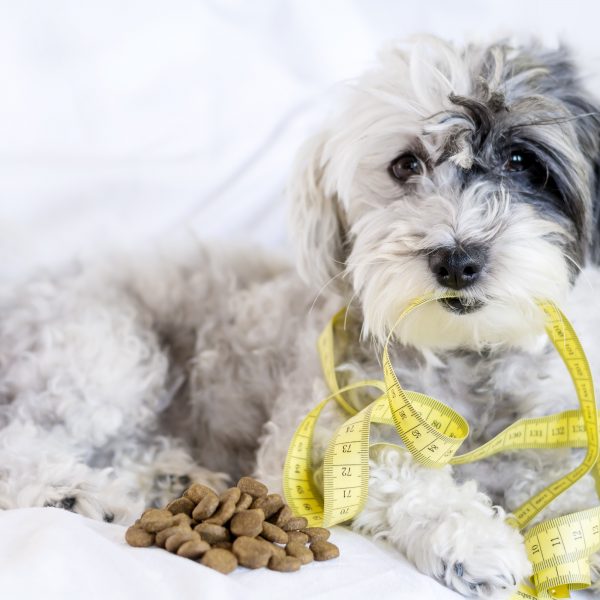How to Help Overweight Dogs Get Healthy
 Does your pooch have a paunch? Many dogs do. In some cases, those paunches are on the borderline between healthy and overweight. Is your dog overweight? If you’re not sure where your dog falls, there are plenty of references to help you determine whether your dog is dangerously overweight. Don’t worry, many dog owners have trouble recognizing obesity in their pets. With 41.9 million overweight or obese dogs in the US, it’s more common than you’d think.
Does your pooch have a paunch? Many dogs do. In some cases, those paunches are on the borderline between healthy and overweight. Is your dog overweight? If you’re not sure where your dog falls, there are plenty of references to help you determine whether your dog is dangerously overweight. Don’t worry, many dog owners have trouble recognizing obesity in their pets. With 41.9 million overweight or obese dogs in the US, it’s more common than you’d think.
Dogs that are overweight tend to experience health issues more often, and with higher severity. Medical concerns like Diabetes, high blood pressure, and respiratory duress are common, just to name a few. It’s important to encourage dogs to lose that extra weight and prevent these potentially deadly diseases. Here are a few different ways to help overweight dogs get healthy:
1. Feed Them High-Quality Dog Food
Start by taking a look at your dog’s food. More often than not, bargain food brands are less than ideal for weight maintenance. For optimum results, focus on buying your dog healthier kibble options. For example, try food that’s high in protein and low in fat. Keep the calorie count to less than 400 per cup.
By investing a little more per dog food bag, you’ll vastly improve your dog’s chances of dropping weight. The better the input, the better the output! Toss out the fatty treats as well and opt for lower-calorie, more nutritious versions instead. Don’t forget to dole out treats in moderation! That goes for meals, too.
2. Start Measuring Meals
A large part of doggy weight loss is monitoring meal size. Do away with automatic feeders for these pups. After obtaining an accurate weight for your dog, ask your vet for their ideal weight as well. Your vet can tell you how many calories to stick to for each meal for a healthy weight loss schedule.
Combined with a sudden new food, smaller serving sizes will likely stress out your pup. The key is in introducing these changes slowly. Over seven days, begin by using ¼ of the new healthy food with ¾ of the older food. Slowly increase the healthy food ratio until their bowl is completely the newer brand. This isn’t to say your pup won’t notice the change! But, they may be more okay with it since it’s less of a shock.
3. Make Sure They Get Enough Exercise
Depending on the severity of your dog’s condition, start with less vigorous exercise and gradually increase it over time. Short trots will turn into brisk walks, and soon they’ll be able to run short distances without stopping for air. You’ll have much more success in motivating your pup to move by making it fun.
Try playing fetch or tossing a frisbee to entice their participation. You can also introduce low-impact activities like swimming. Swimming with your dog is a great way for them to exercise without damaging or straining their joints.
If you have trouble getting your dog out there and moving, try moving their food bowl. It may sound unusual, but by moving their food bowl to your second floor, they’ll need to sniff it out and work his legs up those stairs to snack. As soon as they get accustomed to the bowl’s new place, move it again. Keep your dog on their toes!
Some Weight Loss Side Effects
As your dog starts shedding the pounds, they’ll become healthier and more active. They’ll tend to live longer and have a better quality of life. They may also start begging at the table more.
One of the most unbearable aspects of a weight loss plan for pups is their inevitable begging. Fortunately, we’ve found a few methods that counter the under-the-table puppy whine. When your dog starts begging, try doing something unexpected. Take them outside for a walk, or pet them heartily. Often, dogs will settle for love as a food replacement.
If your dog just isn’t having it, give them a veggie – like broccoli or carrots. It’s not what they want, but they’ll take it. Sometimes giving them some kibble, three or four individual pieces, will suffice to sate their begging. You do want to be careful about how you react to your dog to avoid encouraging undesirable behavior.
Your dog’s whining shouldn’t last long throughout their weight loss journey. They’ll grow accustomed to their new meal schedules and exercise routines. At any rate, the occasional whine is a fine trade-off for a much happier, healthier pup.
